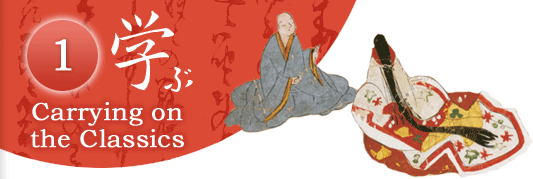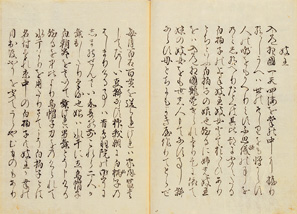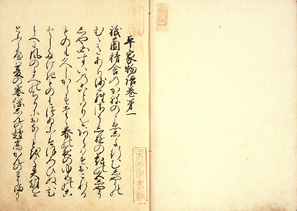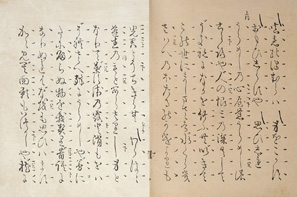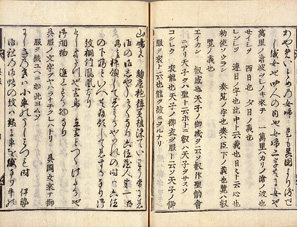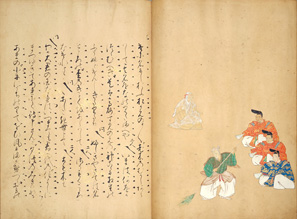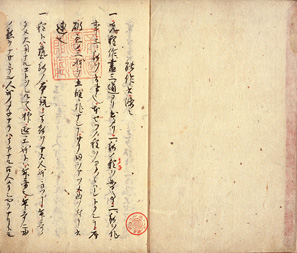Old movable-type edition. Shimomura edition. This is said to be one of the earliest printed books of Heike monogatari (a military epic depicting the maelstrom of war at the end of the 12th century).
Home > 1. Carrying on the Classics > Heike Monogatari and Noh Songs
15. Heike monogatari
- 12 Volumes, printed by Shimomura Tokifusa in the Keicho Era (1596 to 1615), 12 books, 28.2
 21.0cm <WA7-255>
21.0cm <WA7-255>
16. Heike monogatari
- 20 volumes, copied in the mid Edo Period (17th -18th century), 20 books, 28.2
 21.3cm <WA21-12>
21.3cm <WA21-12>
This is one of the scribal copies, which is called the "Nagato version," of Heike monogatari. Much more contents are included in this version rather than other ones distributed more widely.
17. Utai bon
- printed in the Keicho Era (1596 to 1615), 101 books, 24.0
 18.0cm <WA7-256>
18.0cm <WA7-256>
Old movable-type edition. 101 pieces of Noh songs are recorded, using one book for one piece. This is a kind of sagabon, printed on colored paper.
18. Utai sho
- printed by Morikiyo in the Keicho Era (1596 to 1615), 10 books, 27.0
 20.5cm <WA7-208>
20.5cm <WA7-208>
This is the first annotated book of Noh songs. Old movable-type edition. Many intellectuals of that time were involved in making annotations.
19. Yokyoku sanban: takasago, kamo and kantan
- copied in the mid Edo Period (18th century), 1 book, 34.5
 25.0cm <WA21-19>
25.0cm <WA21-19>
This large book covers three pieces of Noh songs with six colored illustrations of Noh stage masks inserted.
20. Noh sakusho
- by Zeami, copied at the end of the Muromachi Period (16th century), 1 book, 24.0
 15.3cm <WA16-59>
15.3cm <WA16-59>
This book was written by Zeami (1363? to 1443?), who accomplished a great achievement in Noh, Japanese lyrical drama, to show how to create a Noh play. Completed in 1423.

